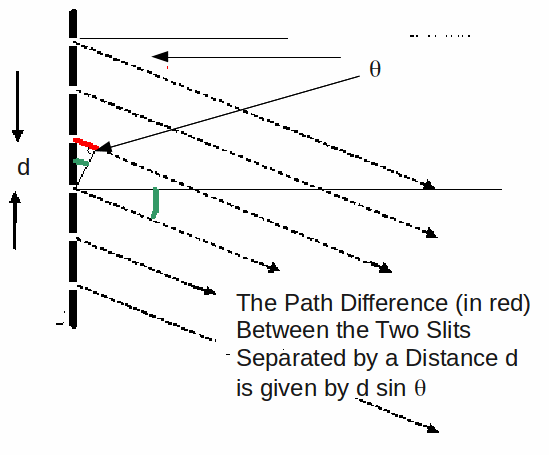The diffraction grating is Young's double slit writ large. Young's double slit has two slits, and the diffraction grating has many slits, each separated by the same distance. Additional slits with a constant separation will not affect the condition for constructive interference, so the angle at which the light from slits adds constructively wull be unaffected by the number of slits.

For constructive interference to occur, the path difference between light from neighbouring slits must be a whole nu,ber of wavelength, n %lambda . Thus for constructive interfrence the condition is![]()
The same formula and the same analysis applies to Young's double slit experiment. The difference between the diffraction pattern produced by a diffraction grating and Young's double slit experiment is most niticable for those angles where perfect constructive interference does not take place. The angular width of each maxima is larger for Young's double slit than the diffraction grating. On the other hand, the diffration grating allows more light through, since it has more slits, so the pattern increases in intensity.
